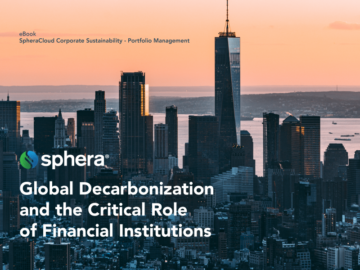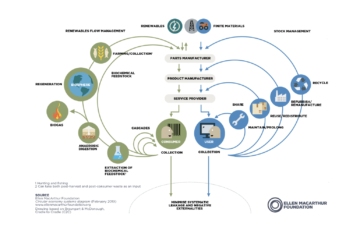
As environmental, social and governance standards increasingly become mainstream in finance, savvy investors should expand their definition of ESG to include the origins of the funding behind their portfolios and how the profits they produce are used. I call it the “look-in and look-through approach,” a philosophy that applies traditional ESG standards to investments but takes things further by also examining where the cash financing an investment comes from and how it is used.
The look-in and look-through approach goes far beyond making sure that only legitimate cash is flowing in and out of an investment vehicle. It applies the same ESG standards not only to purchases but also to funding sources — in a broader effort to avoid supporting activity detrimental to ESG concerns.
As demonstrated by its name, the look-in and look-through approach is twofold. The “look-in” portion involves monitoring where funding comes from, while the “look-through” refers to the examination of the holdings in a company’s portfolio. Both aspects of the approach are vital in gaining a better understanding of which companies are truly ESG aligned, and which aren’t.
The timing is ripe for this kind of expansion because many people in the investment world are still figuring out the nature of ESG, how it will evolve and how it aligns with their priorities. By more deeply analyzing ESG standards, we’re more likely to understand its potential and help the financial sector face the challenges that these standards are meant to address.
Existing regulatory mechanisms
There is still a perception that ESG may represent more risk and smaller profits than conventional, non-ESG products. But over time, the data shows that ESG cultivates improved governance, better decision-making, more gender diversity and smaller environmental impacts. Those developments, in turn, create better outcomes. The same is true of the look-in and look-through approach.
There are already some regulatory mechanisms that exist in this area. For example, the Sustainable Finance Disclosure Regulation, or SFDR, entered into force in the European Union earlier this year, and the Task Force on Climate-Related Financial Disclosures, or TCFD, four years ago created a regimen of financial disclosure recommendations designed to help investors assess climate-related risks. All indications are that U.S. regulators will follow suit in the near future.
Despite the changes and the momentum, some investors have yet to react to the trend. But sophisticated investors know that changes need to be made if they want to succeed and exert a social impact through their investments — and reap larger rewards from them, too.
New disclosures to investors about the money trail behind the assets they are acquiring are central to the approach.
Cajoling skeptical investors to adopt ESG standards into their decision-making will only go so far, of course. Monitoring ESG impact requires data collection, for example, and smart investors should ask questions about the integrity of that data to make their decisions. ESG standards that might be a good fit in one jurisdiction won’t necessarily be a good fit in another, especially in markets where there’s an absence of uniform principles such as SFDR and TCFD.
As these obstacles fall, the look-in and look-through approach could initiate follow-on effects. New disclosures to investors about the money trail behind the assets they are acquiring are central to the approach. Disclosure always initiates broader changes. When informed, investors alter their behavior and move markets. The look-in and look-through approach would inaugurate changes from the top down due to more disclosure requirements. At the same time, educating and informing investors would trigger changes from the bottom up.
‘Purification’ of returns
Taking these steps does not apply only to new investments or the costly prospect of reinventing an existing fund. There is also the option of “purification,” which is a way to improve an investment that is not in an ESG-focused area. What it requires is taking responsibility for that fact and “purifying” it by directing a percentage of the income to specific charities or other ESG-related organizations as a way to mitigate the concerns of investors while also making the overall company of investment more ESG-focused.
Taken as a whole, I think the look-in and look-through approach could take root and evolve quickly because ESG is already popular, even though finance is just beginning to understand it.
As more investors continue to gain a better understanding of ESG and grow to expect ESG-related materials to be available, they’ll start asking questions that go to the hearts of their models: “Where is the money coming from? Where is it flowing to? What is the form of governance?”
When that happens, the funds that will come out on top will be the ones who addressed their look-in and look-through obligations sooner rather than later.











